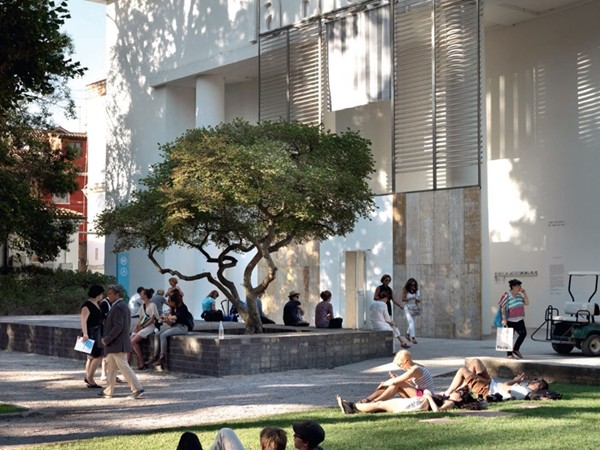‘Common ground’ was the theme of the 2012 Architecture Biennale in Venice. The head curator of the Biennale, British architect David Chipperfield wanted the 119 contributing architects to downplay individual manifestations in favour of more collective statements.
Chipperfield wrote in the main text of the Biennale programme, "The built world is a testament to the continuous evolution of architectural language." He believes that this testament nourishes a critical and forward-looking understanding of the world.
The Biennale’s theme inspired many interesting and meaningful submissions. Some took the form of large, interconnected installations and architectural models, or even entire rooms in 1:1 scale. Several of these full-scale contributions utilise brick as their means of expression. It could be said that the theme of the exhibition is well suited to brick. After all, what building material says ‘common ground’ more than brick, which has left its indelible mark on every one of the inhabited continents for thousands of years?
Among the most accomplished brick installations were the German studio Kuehn Malvezzi’s contributions to the main exhibition building in the heart of the Biennale area. The installation consisted of an elongated, solid brick plinth at seat height, set outside the building’s main entrance, and a light, screen-like spatial installation built in the building’s octagonal central area.
What is both surprising and refined about Kuehn Malvezzi’s work is that the bricks are stacked in exactly the same way in both works. They are vertical on the long side and stacked in straight, vertical columns without overlapping joints.
In principle, this is against the rules for the massive construction, but the combination of a plinth layer on top of a layer of vertical sections confers the necessary cohesion and solidity. The plinth’s horizontal upper surface is therefore characterised by the stretchers, the long sides of the headers and the short sides of the bricks’ rectangular surfaces, creating a reversed effect, whereby the upper face resembles a horizontal wall, while the end walls have the character of a raised surface.

It is exactly this effect that dominates the spatial installation inside the exhibition building. The walls look like horizontal sections that have been raised from their normal position into an upright stance. This inverts all preconceived notions about the right way to build in brick. Brick has been freed from strict bonding rules, and in the process has generated a great many new options for stacking and patterning. The fact that this also disregards some significant practical aspects of the well-functioning building – for example, thermal regulation, moisture control and air quality – is a completely different matter.
However, in Kuehn Malvezzi’s installation, this is not a concern. Here, the subtle dialogue with the massive plinth is both thought-provoking and beautiful. It also works well in purely spatial terms. The thin, stacked walls form a zigzagging spatial movement that obscures the direct line of sight between the entrance and the exhibition halls.
Petersen TEGL donated the bricks for the installations. The bricks from the very beautiful D99 range feature varied and shimmering surfaces, which include black, grey, blue, white and green hues, and clearly come into their own outdoors. Indoors, a series of very unfortunate fluorescent lights spoil the experience of the bricks’ ceramic qualities. The cold light makes the stones seem more grey and weathered than they really are. However, the bricks’ warmer nuances are in perfect harmony at the plinth, and the bricks provide literal and figurative common ground for visitors in need of a rest.

